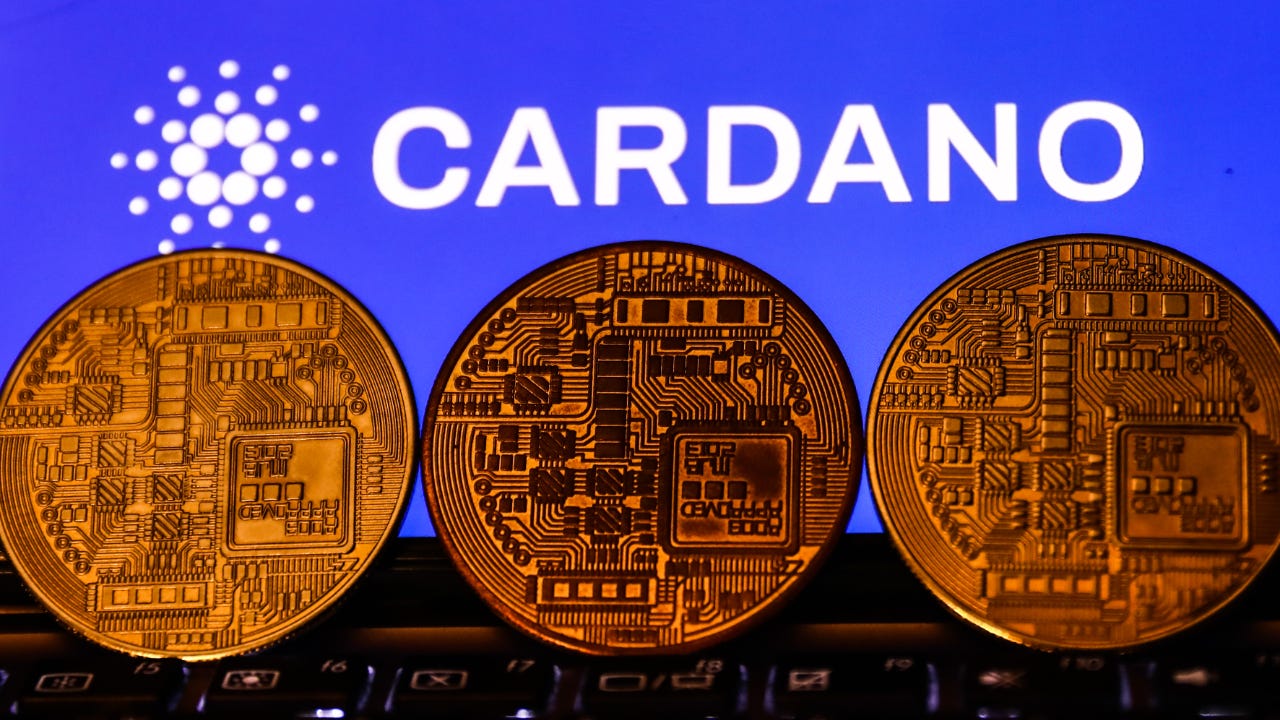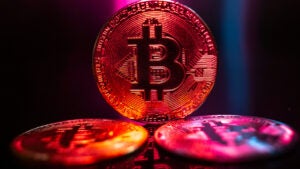What is Cardano and how does it work?

Our writers and editors used an in-house natural language generation platform to assist with portions of this article, allowing them to focus on adding information that is uniquely helpful. The article was reviewed, fact-checked and edited by our editorial staff prior to publication.
Cardano is a popular form of cryptocurrency, a kind of digital currency that exists exclusively online. Cardano was founded in 2015 and began trading publicly in October 2017 at the price of a few cents per coin. As of April 2024, the coin trades at $0.47, though it had peaked at $3.10 in September 2021. It’s the tenth largest cryptocurrency by total value, according to CoinMarketCap.com.
Here’s what Cardano is and what you need to know about it.
What is Cardano?
Cardano is one type of cryptocurrency in a market of more than 10,000 crypto coins. The cryptocurrency is called Cardano, while the individual unit is called ada.
Cardano was created by Charles Hoskinson, a co-founder of Ethereum, the second largest cryptocurrency behind Bitcoin, and it runs on a decentralized public ledger using blockchain technology. Blockchain manages and tracks the cryptocurrency, recording and ordering every transaction that occurs using it, like an endless receipt.
This decentralized system validates transactions, verifies their integrity, and helps to ensure that the system as a whole is robust and error-free. Cardano uses what’s called a “proof-of-stake” system, in which owners of the currency are tasked with validating transactions in exchange for a reward. This “staking” reward can be an attractive way to earn income, and the best crypto brokers let you participate in staking with little or no cost.
Like many other crypto coins, it’s useful to think of Cardano as a token that enables you to power or enable apps. Sending money is just one aspect of what Cardano and many other crypto coins allow you to do.
What does Cardano do?
Cardano enables several different features on its platform:
- Currency: With a cryptocurrency wallet, you can send and receive Cardano or transfer it in exchange for goods and services.
- Smart contracts: Cardano enables smart contracts, which are contracts that automatically self-execute when the contract’s conditions are fulfilled.
- Decentralized finance: Cardano enables people to skip the middleman, such as banks and other financial institutions, to transact directly and on a permission-less basis with other individuals or entities.
- Digital apps: As part of decentralized finance, Cardano can enable lending, trading, asset management, insurance and other typical financial services.
So it’s useful to think of Cardano as a token that powers various financial services rather than merely as currency, though that is one of its functions, too.
Where do Cardano coins come from?
As of April 2024, there were about 35.6 billion ada in circulation, according to CoinMarketCap. The total supply is capped at 45 billion coins.
The fixed supply makes Cardano like Bitcoin, where the supply is limited to 21 million coins. And it’s in contrast to Ethereum, where the supply is unlimited, but the annual issuance is limited. Another popular cryptocurrency, Dogecoin, has an unlimited total supply.
Cardano’s proof of stake system allows those who own the cryptocurrency – those who have an interest in maintaining the integrity of the system – to validate transactions on the blockchain. These validators earn rewards (in the form of the crypto coin) for operating the system. However, if validators approve incorrect transactions, stakers can lose money.
And as an owner of the cryptocurrency, you can stake your coins with a validator and earn a proportional reward, though often with a fee for the service.
Is Cardano a good investment?
Like many cryptocurrencies, the price of Cardano has been very volatile. Instead of looking at recent gains or losses, it’s important to understand exactly what you’re buying.
From that angle, Cardano is not backed by any assets or cash flow of an underlying business, a key distinction between almost all cryptocurrencies and stocks. A stock is a fractional ownership stake in a company, so if that company grows over time, the stock will likely appreciate, too. Shareholders literally own the equity stake in that business, and they have a legal claim on its assets and cash flow. The stock may also pay a cash dividend to its shareholders.
In contrast, traders in Cardano have no such claims or backstops for their investment. Cardano rises and falls as the optimism of traders waxes and wanes. What propels cryptocurrencies such as Cardano is sentiment, speculation and the optimism of other traders, not the success of an underlying business. Traders figure they can sell the coin later to someone else for a higher price, or what’s called the “greater fool theory of investing.”
Often in such cases, the market finally runs out of ever more optimistic traders and the price crashes as speculators run for the hills. This setup – the lack of a growing, cash-generating company underlying the investment – is what keeps many high-profile investors, such as the legendary Warren Buffett, from investing in cryptocurrency.
Bottom line
If you think cryptocurrencies are the next big wave, you could invest in them, but you have other ways to play them rather than invest directly in the tokens. For example, you can invest in companies that profit from blockchain technology or purchase a Bitcoin ETF in your brokerage account, and ride the wave that way.
If you’re committed to trade Cardano or other cryptocurrencies, though, it’s vital to expect volatility. And you could potentially lose your whole investment, if you’re buying an asset that’s not backed by anything. So don’t put in any money that you can’t afford to lose.
Learn more:
- Bitcoin vs. Ethereum vs. Dogecoin: Top cryptocurrencies compared
- Cryptocurrency taxes: A guide to tax rules for Bitcoin, Ethereum and more
- How to buy Bitcoin: 5 ways to add the popular cryptocurrency to your portfolio
Editorial Disclaimer: All investors are advised to conduct their own independent research into investment strategies before making an investment decision. In addition, investors are advised that past investment product performance is no guarantee of future price appreciation.






